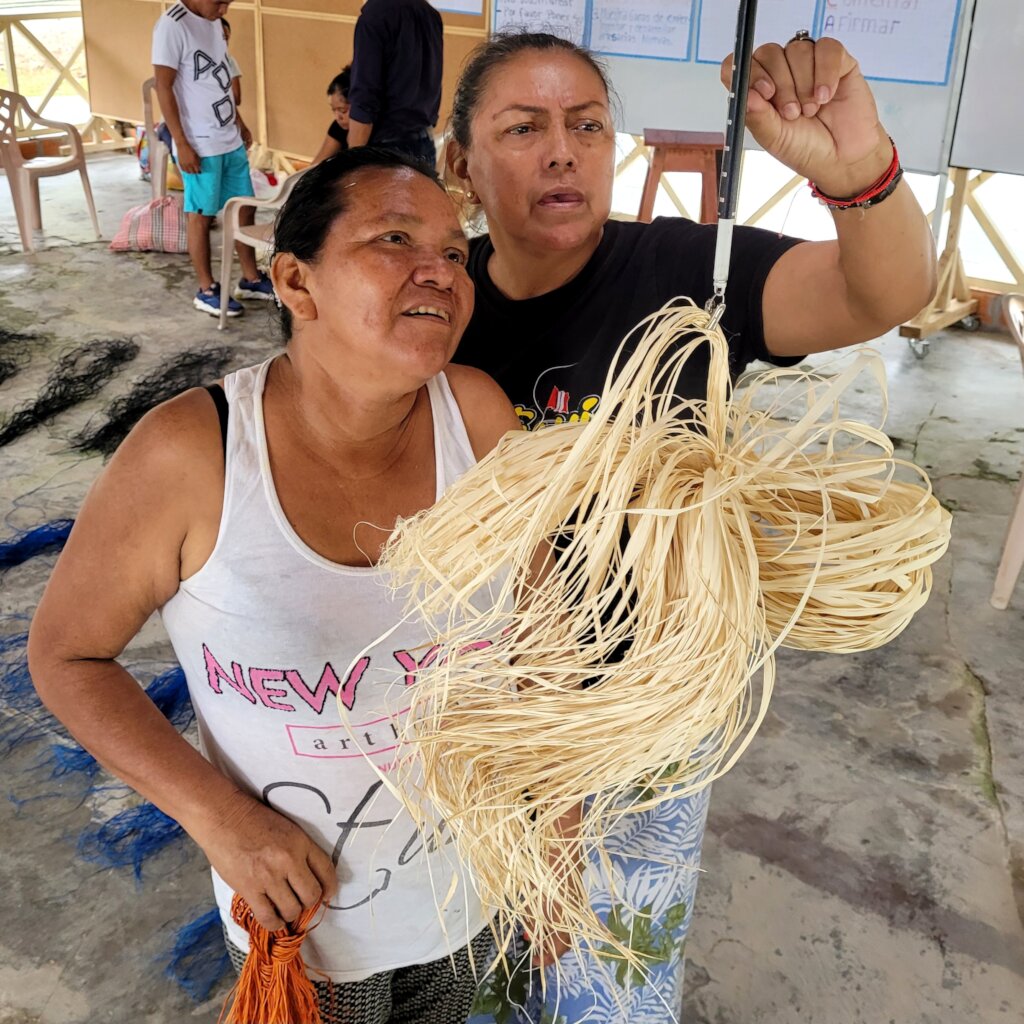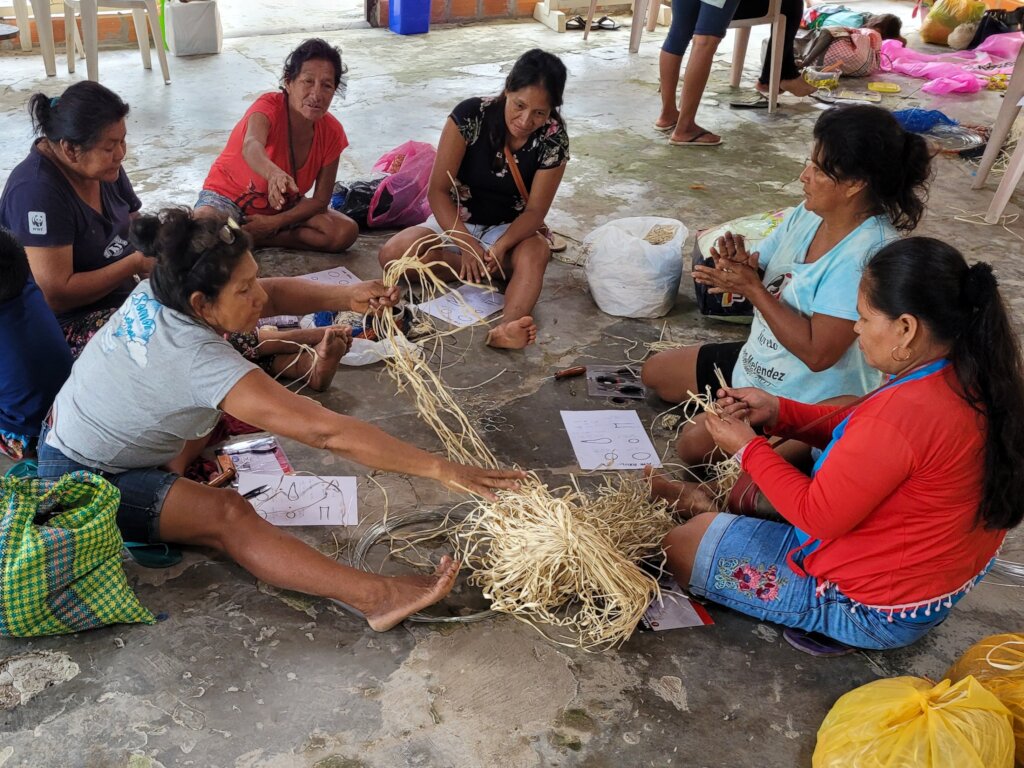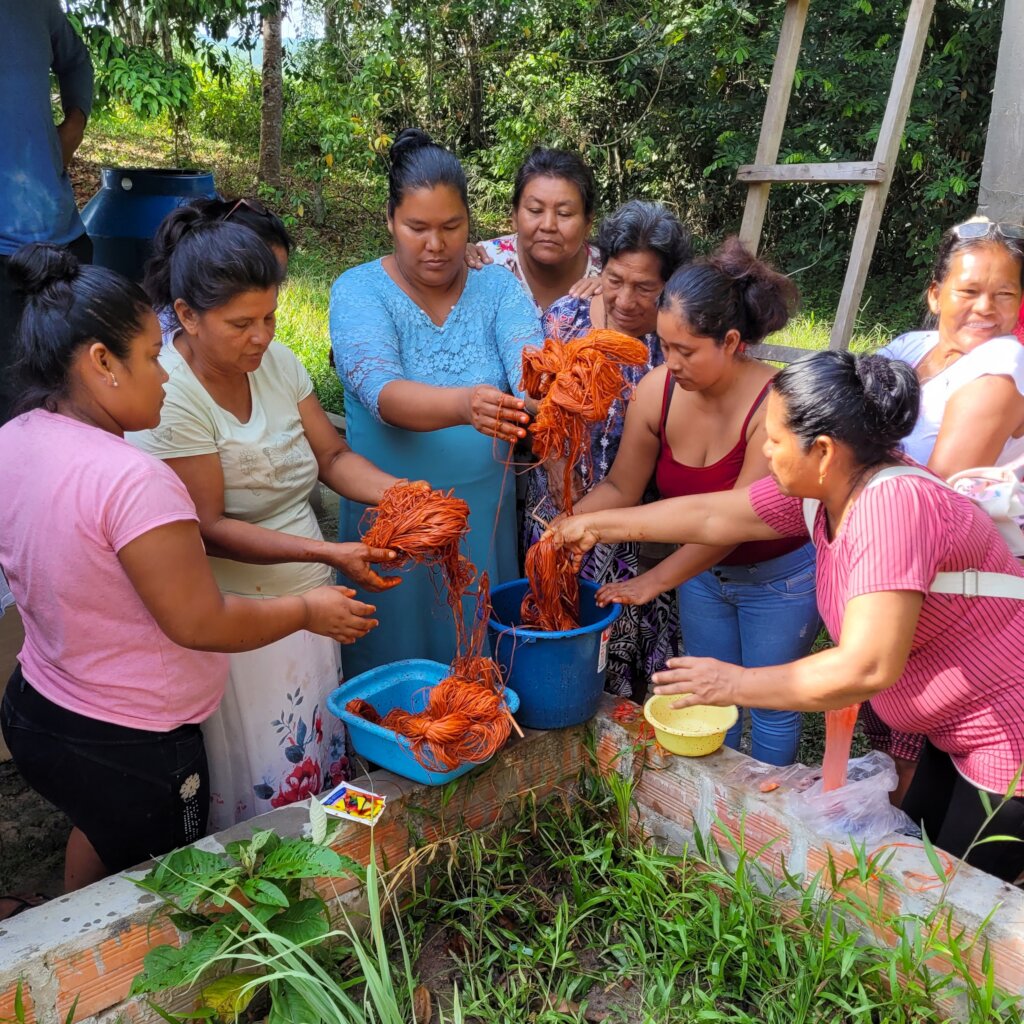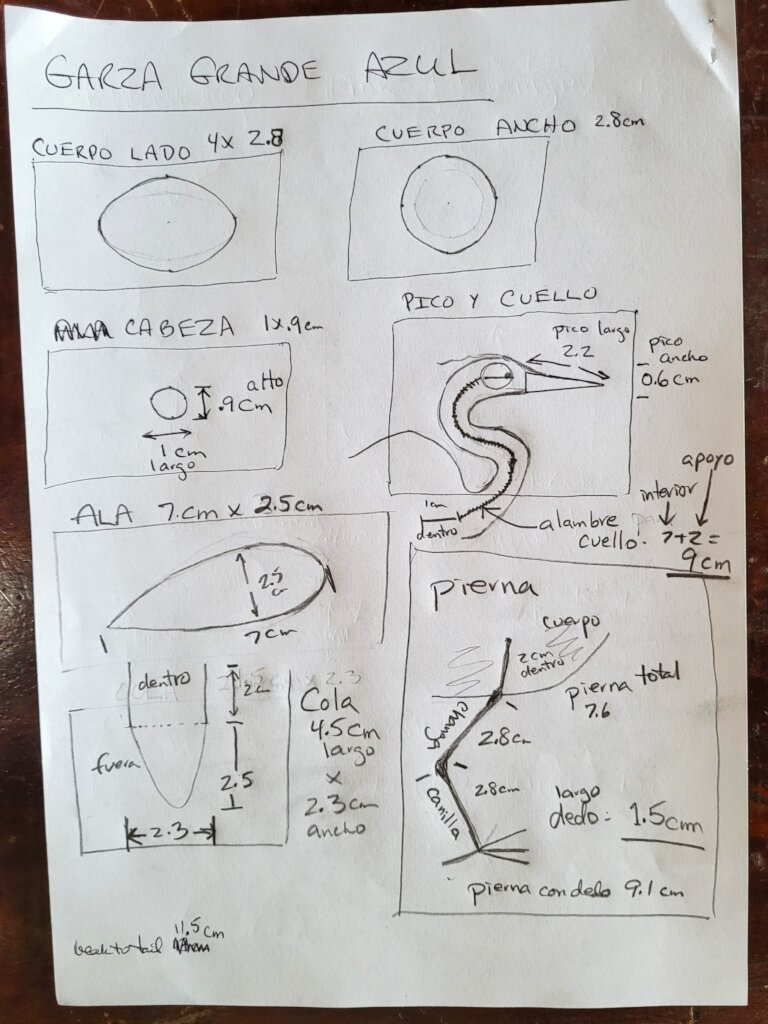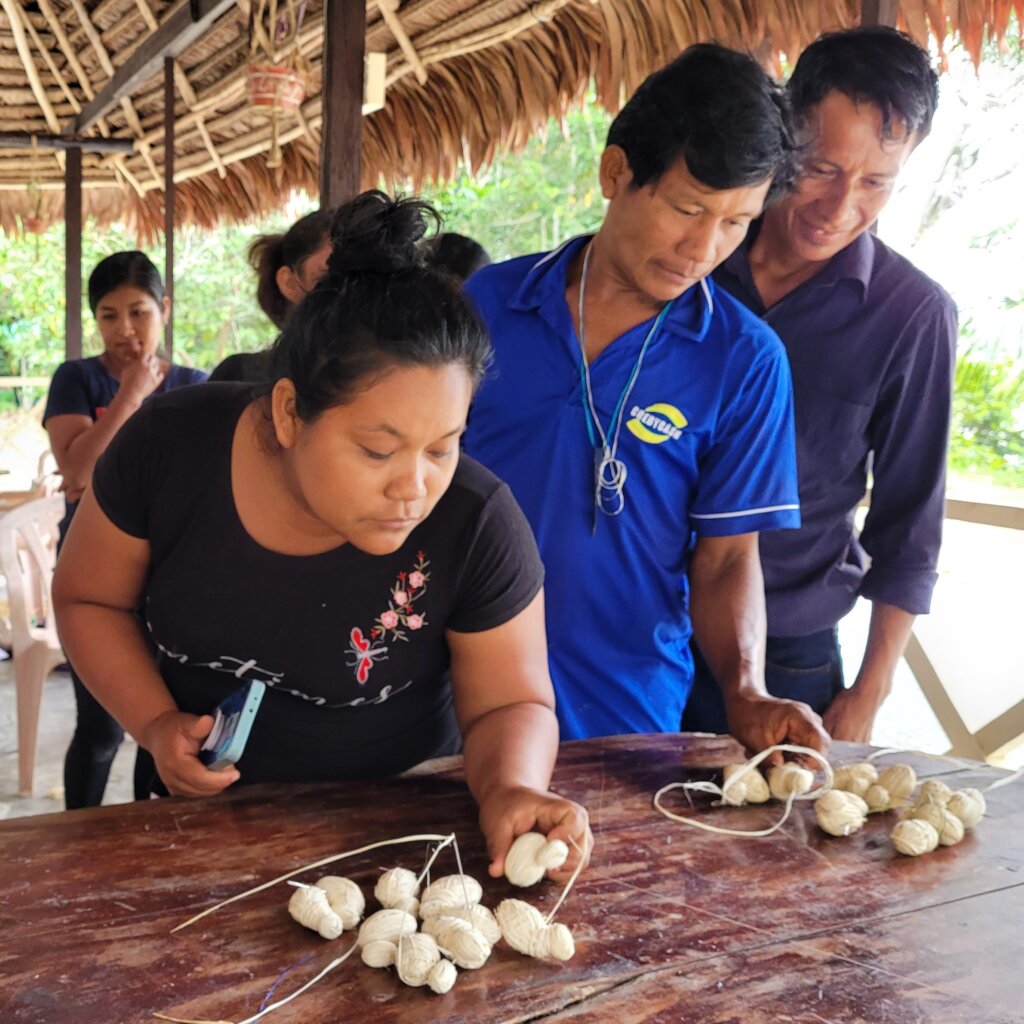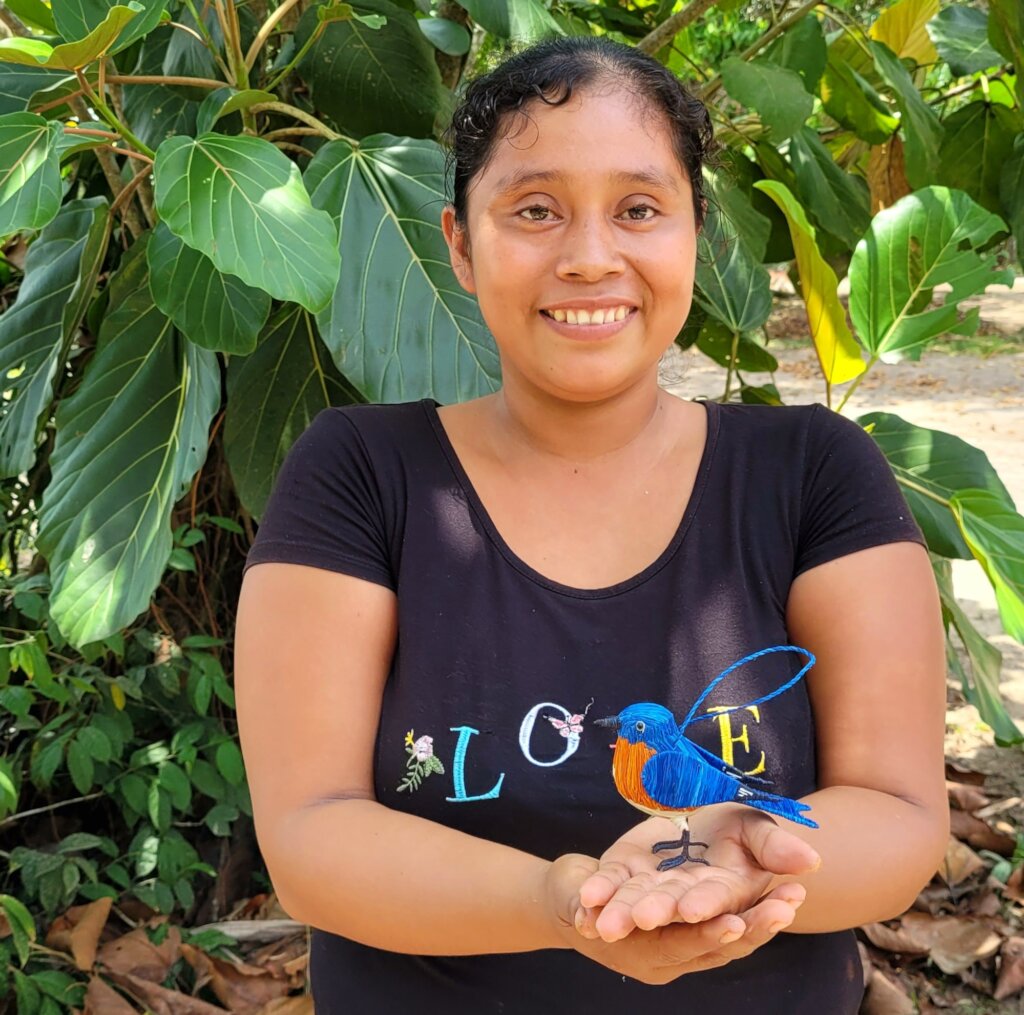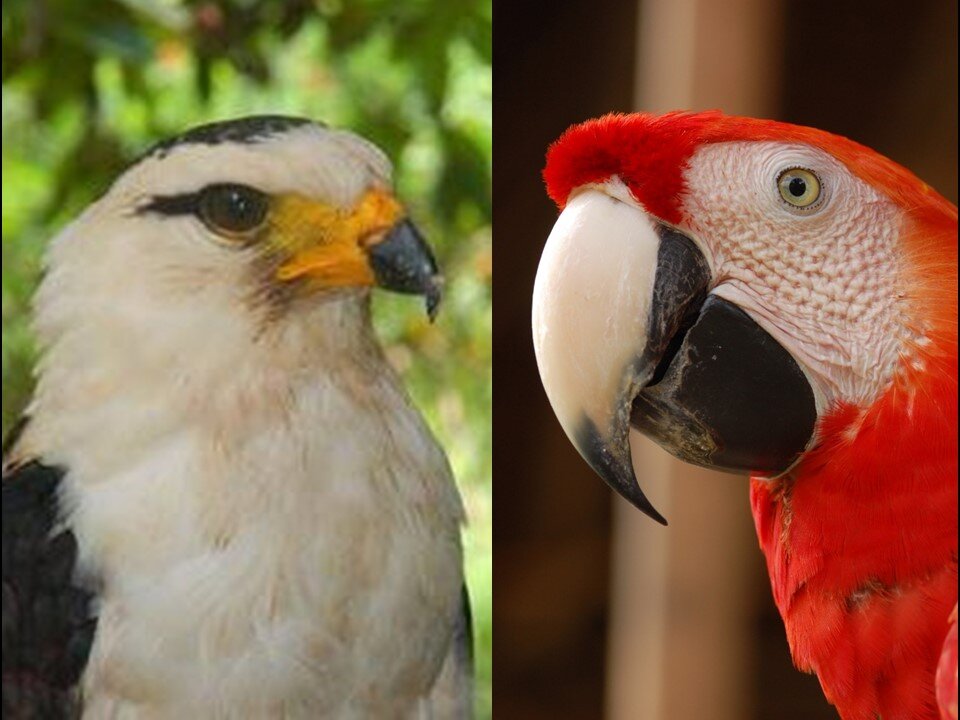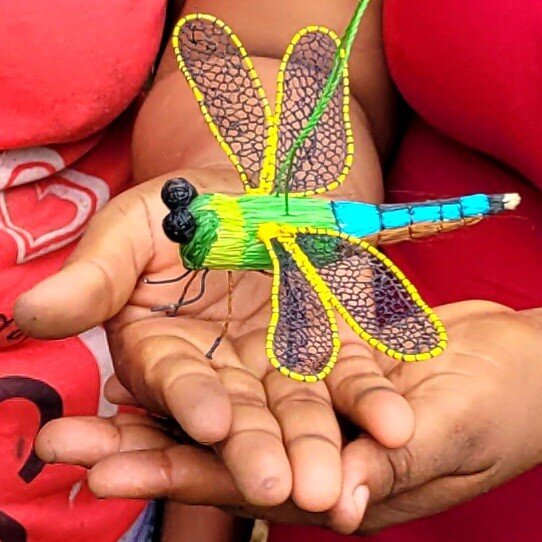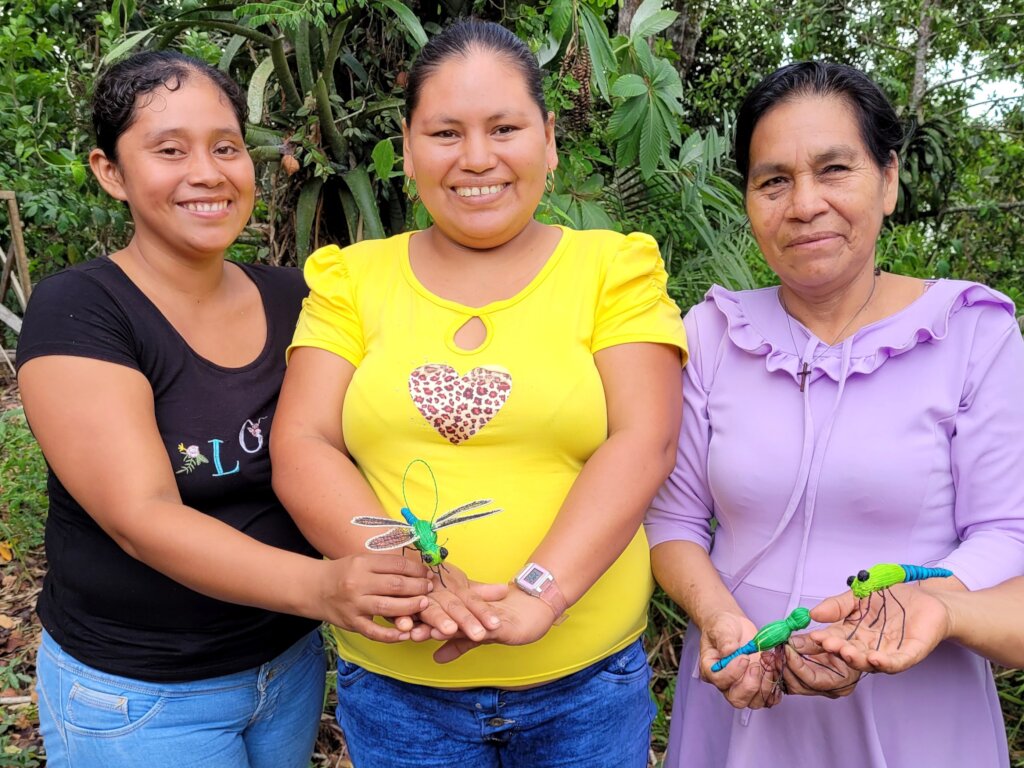By Campbell Plowden | Executive Director and Project Leader
We learned some years ago that just because an artisan is good at making crafts doesn’t necessarily mean they are good at teaching others to do so. So we now have a special workshop to train artisan facilitators who will lead the craft making workshops, develop new crafts, and become leaders in their artisan associations. We held our most recent artisan facilitator training at the Minga Peru workshop center near Nauta in October with twenty artisans from seven of our partner communities.
For the first two days, the participants worked in small groups to make bluebird ornaments. We weighed the amount of chambira palm fiber and secondary leaf strands (“bagasso”) and wire and number of glue tubes that the groups received so would could estimate how much material would be used to make these bird ornaments.
While our artisan partners have steadily improved the quality of their bird ornaments, we introduced a paper template that had outlines of the shape and length of the wires that would be used to make the body, head, wings and tail of the bird so the artisans could make them with as much consistency and anatomical accuracy as possible.
Each artisan was responsible for making their own set of wires from these templates and using them to guide the making of the inner part of the bluebird body with “bagasso” which is often treated as a waste product because this secondary part of the leaf cannot be easily colored like the primary quality fiber. As each person make this first part of the bird, they compared them with each other to strive for the correct length and diameter. During a break before lunch, everyone examined their collective efforts.
Most of the artisans from Amazonas arrived late at noon since they had had to meet with representatives from a eco-tourism company to resolve issues related to their bringing clients to their village. Our experienced facilitator Pablo helped them understand the lessons from the morning, and they resumed working on their birds under lights at night to catch up.
While our initial goal was to have each artisan make two birds at the same time to simulate the technique used by experienced artisans making multiples of one species, we dialed back this goal to one bird per person during the first two days when we realized that we wanted artisans to focus on learning facilitation skills more than maximizing production during this workshop.
Another challenge we have often faced making bird ornaments that look like the actual species is consistently preparing the proper color. While artisans can use natural plant dyes to make many types of crafts, we have learned that artisans need to use synthetic dyes to make birds and butterflies because these animals have many colors that are not available from plants and contact with the glue needed to put the ornaments together discolors the chambira fiber dyed with plants. While we found a synthetic blue that closely matched the blue in the bluebird, we were frustrated finding dyes to represent the rust color found on its breast. We, therefore, greatly appreciated the patient efforts of Wilson, a young artisan from San Francisco, who tried seven different combinations of brown and orange powder before he finally hit on just the right color for the accent of the bluebird, towhee and other birds. He provided this rough formula to a group of artisans at the workshop who did their own trial and error to produce a large batch of chambira fiber with this key color.
As progress on the bluebirds progressed, the role of the facilitator within each small group became increasing important. This task rotated among each member every 20 minutes so everyone regularly got the opportunity to closely observe their group mates and share any feedback they thought would be helpful.
When the bluebirds were made, we reweighed the chambira and wire that were left. We subtracted these from the starting amounts and estimated the amount of glue, dye, and beads (for the eyes) that had been used so we and the artisans could get a better idea of the amount and cost of materials needed to make these ornaments. They were rough calculations, but these results showed that these costs were about 10% of the amount that we paid for them. The results also showed that the artisans earned four to twenty times as much per chambira leaf making these bird ornaments than other material intensive crafts like bags, baskets and hammocks.
We began the third day with a brief presentation about the way that bird beaks, feet, and eye placement tell a lot about what, where, and how a bird gets its food. Insect feeders generally have long sharp beaks while seed feeder beaks tend to be stubby and strong. Water bird legs are generally long and have long toes or web feet. The eyes of owls and other raptors face to front to give them binocular vision for hunting while most other birds have their eyes on the side of their heads to give them a broad view of potential threats. We followed this with a fun quiz with rapid fire images of different birds, and the first person to call out the proper type of feeder was tossed a piece of candy.
In preparation for another group activity, all of the participants were challenged to stand in close quarters on a tarp and flip it from the blue to the black side in the shortest amount of time without anyone stepping off the plastic. After their first try, they were given a chance to discuss their strategy and reduced their time in the second try. Noticing that most of the instructions were being called out by the few men in the group, the third try required that only women could vocally direct the group and they improved their time once again while the men were silent.
The final challenge of the workshop was giving groups of four or five people several photos of the Green Darner Dragonfly (a common species in the US). They were then invited to work together to make three ornaments with specific dimensions. Most artisans came up with their own ways to make the body and fine webs of the wings while one group tried to emulate the technique used in one model done by another artisan several years ago. One group used an assembly line process, two groups had each person do their model with attempts to do them in consistent ways, and the fourth group had their most experienced artisan make a sample first before proceeding to make the others. None of the versions were ready to serve as a prototype for a large order, but it was great practice for these potential artisan leaders to collectively think through how to make a very different sort of craft.
The feedback that we received at the end of the workshop was truly heartwarming. The most common type of comment was that every person improved their craft-making by learning from many other artisans. The newer artisans, in particular, understood better that being facilitator did mean they needed to be or act like the “expert” to fill this role well. Facilitators should of course share what they know, but beginning and experienced artisans all benefit by remaining humble, enthusiastic about learning, and committed to encourage and affirm their fellow artisans. So many artisans said that the thing they most wanted to bring back to their communities was the joy and spirit of working in a mutually supportive environment.
Thank you very much for your support for our work on Giving Tuesday and any other day of the year.
Links:
Project reports on GlobalGiving are posted directly to globalgiving.org by Project Leaders as they are completed, generally every 3-4 months. To protect the integrity of these documents, GlobalGiving does not alter them; therefore you may find some language or formatting issues.
If you donate to this project or have donated to this project, you can recieve an email when this project posts a report. You can also subscribe for reports without donating.
Support this important cause by creating a personalized fundraising page.
Start a Fundraiser
